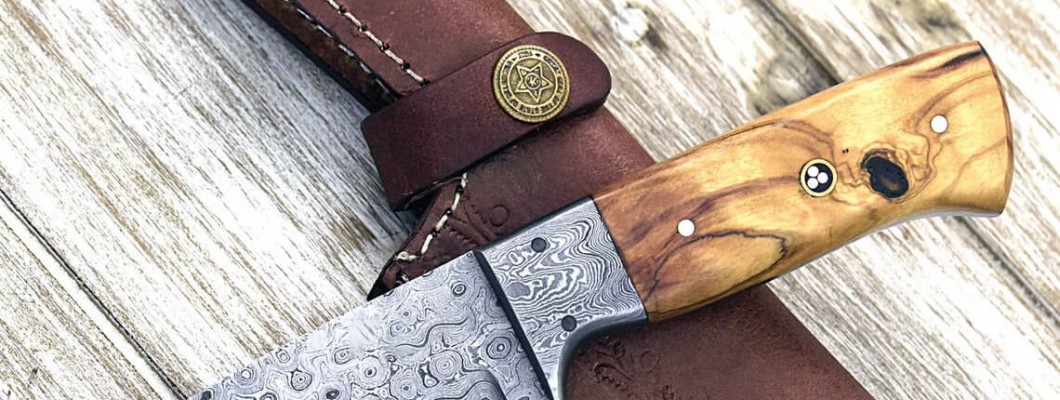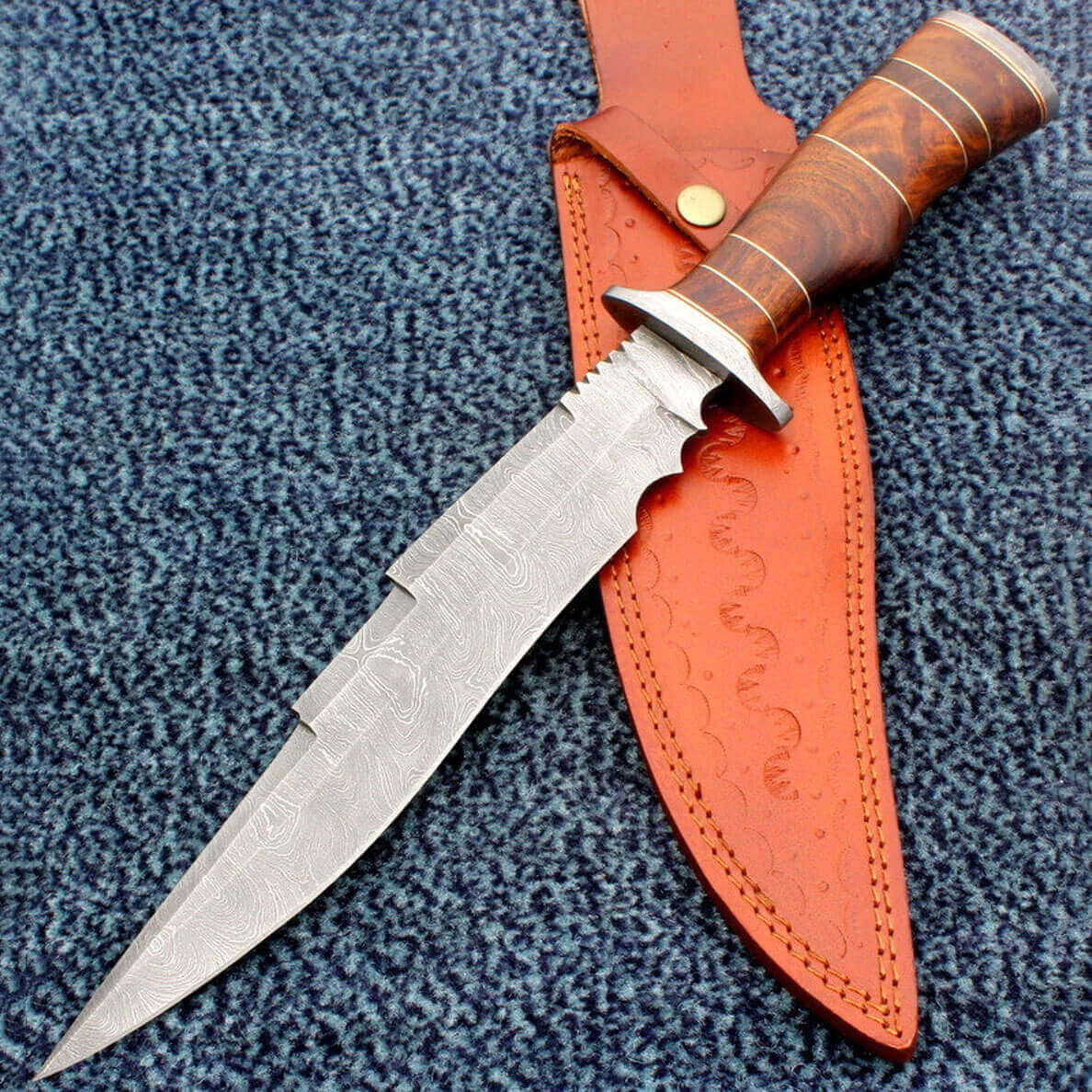
Real Damascus Knife The knife world is plagued with fakes and frauds.
People on eBay are trying to pass off $400 Sebenzas as real and sellers on Amazon are unknowingly selling fake CRKT and SOGs to unsuspecting customers.
Because of all the tricksterism plaguing the knife community, I often get asked whether a knife is real or fake. While I recently wrote a guide on how to spot a counterfeit knife, it didn’t address another popular question — is my Damascus knife a fake?
Damascus knives are becoming more popular and more prevalent from the most popular knife brands like Spyderco (with the Endura and others) to lesser known brands like BucknBear.
What makes people even more confused about the legitimacy of Damascus steel is the vast price differences. Could a $50 knife with Damascus steel be real when you see other Damascus blades topping the $500 mark?
Let’s dig deeper.

What is Damascus?
Before determining whether your Damascus is fake or real, we should first define what Damascus actually is.
Damascus is that wavy pattern in steel that looks exotic and downright gorgeous.
I’m simplifying this a ton, but there are two ways to get “real” Damascus steel: Wootz and pattern-welded steel.
Wootz steel
The first real Damascus steel was introduced around the third century and was known by Wootz (and other names). It was a crucible steel that was made by melting pieces of iron and steel in clay pots.
Here is an excellent layman’s explanation from The Association For Renaissance Martial Arts:
It’s produced by melting pieces of iron and steel with charcoal in a reducing atmosphere (lacking oxygen). During the process, the metals absorb carbon from the charcoal and the resulting alloy is cooled at a very slow rate. This produces a material with a visible crystalline structure of varying carbide contents. Forging the material into a desired shape (such as a sword blade) alters the crystalline structure into the familiar waving or watered pattern that Damascus steel is known for. This technique is extremely work intensive and requires a high degree of skill to keep the necessary temperatures constant throughout the process.
This type of steel originated in India and was passed down by blacksmiths throughout the East. The steel was eventually introduced to Damascus, Syria. There are many theories why it is called Damascus, but we won’t go into it here.
The true way to make Damascus this way was lost somewhere in the 17th century as those handed down the knowledge died out. People in modern times have mimicked the process and likely have come close to recreating the original Damascus.
However, the soil composition and chemical properties of the steel used in the specific region make truly recreating that original Damascus likely impossible.
Pattern-welded steel
This is what people these days call Damascus. It represents 99.9 percent of all the Damascus steel you see.
This process involves forging two or more types of steel that complement one another and folding the steels together. Then, some acid etching is done to amplify the differences in the steel. This creates a wavy pattern that closely resembles the Damascus of old.
Pattern-welded steel fell out of fashion for centuries before being brought back to modern times singlehandedly by the ingenious Bill Moran in the 1970s.
Here is an image of the Moran Fighter from The William F. Moran Jr Museum
You will also sometimes see knives that say VG-10 Damascus. In this process, there is a VG-10 core with Damascus steel on either side. The steel is laminated in the mold of San Mai, in which three layers of steel are sandwiched together.
If you can’t wrap your head around what I’m talking about, watch this video from Walter Sorrells about the two types of “real” Damascus steel Knife.
Thanks for reading! And please, if you have any questions, don’t hesitate to drop us a note in the comments section below.
contact us here https://www.realdamascusknive.com

Leave a Comment